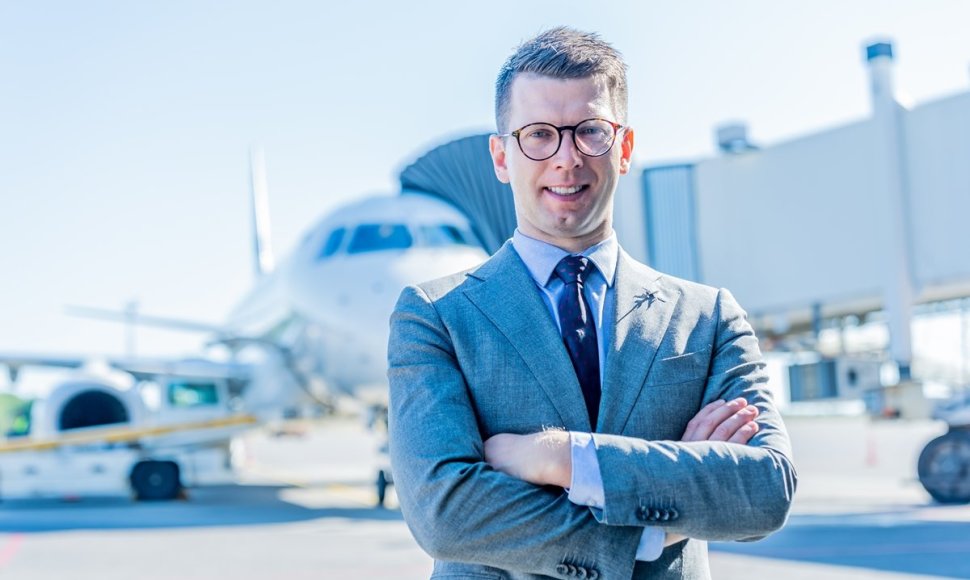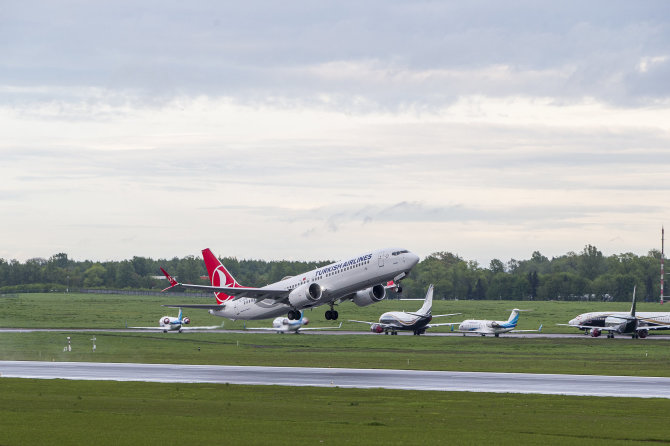Stable growth
Over the past decade, the global aviation industry has enjoyed stable growth, and between 2009 and 2019, the annual commercial aviation company income growth reached over 5 per cent annually. And in 2019, the global aviation industry's turnover reached historical heights – 838 billion US dollars.
However, this was decimated by the emergence of COVID-19, and with drastic declines in airline incomes, global aviation experienced massive losses. The damage caused by the pandemic is still being calculated, but based on preliminary data, the sector's income plummeted by up to 372 billion US dollars in 2020. This income level was first recorded in 2000, which means that the pandemic cast growth back by two decades.
However, the expectation is that the aviation sector will consistently recover by 2023-2024, returning to the level of 2019, but a difficult recovery process awaits. Unlike the 2008 global financial crisis, which was purely economic in nature and temporarily limiting consumption, COVID-19 will leave deeper scars in the consumers' behaviour.
What key changes will the aviation experience due to the pandemic, and how will it adapt to the long-term consequences of COVID-19?
Some of the changes are evident – while travelling, air companies' hygiene and safety standards will remain particularly strict. At the same time, digitalisation will continue to change the travel experience, and mobile apps will continue to be used to save travellers' vaccine certificates and COVID-19 test results.
Vaccination stimulates travel
The first half of 2021 indicated a weaker passenger traffic recovery than expected, but increasing vaccination momentum has clearly reduced travel restrictions. Currently, 58 per cent of European Union citizens have had the first dose of vaccine, and, we can already see clear signs that the second half of this year will see a larger number of passengers returning to airports.
A key factor in this context of recovery is something of a breakthrough in the travellers' understanding of the travelling process - a significant number of passengers understood in the spring that COVID-19 will not vanish in the new reality, and while we learned to manage the threats posed by this coronavirus and will likely handle them even better in the future, it is not worth expecting that the pandemic will suddenly end without warning one. And so travellers are no longer willing to postpone travel.
It has been calculated that across the EU, the number of seats on offer on aircraft in the third quarter of this year will reach on average 70 per cent of what was offered in the same period in 2019. It is predicted that this indicator could be even higher in Lithuania, reaching 75 per cent. Overall, at the EU level, based on July data, Lithuanian airports were in fifth place among EU countries, surpassing Latvia and Estonia. It indicates that the multi-scenario flight restoration strategy being implemented by Lithuanian Airports is functioning well on a manifold platform and that the Lithuanian market is prepared to travel.
That said, departing tourism currently generates larger passenger volumes - nevertheless, increasingly less restrictive travel requirements should further encourage the emigrant sector, which travels between Lithuania, the UK and Ireland. Both of these countries comprise a quarter of Lithuanian airports' total passenger volume.
Holidaymakers return to flying
Both in Lithuania and other countries, leisure travel is becoming the catalyst for the passenger air transport sector. Air travel recovery has been reported in the EU and in the USA, Brazil, and China, which are counted as being among the most important air travel markets. At the same time, it is emphasised that passenger volumes will be mostly generated by internal flights in the near future. In contrast, the recovery in intercontinental travel, which is relevant to the EU market, will take time due to varied pandemic containment measures.
As indicated by experiences from previous crises, leisure travel and visits to friends and family are inclined to be renewed the fastest. This also occurred both after the 2008 global financial crisis and the September 11 events. Meanwhile, statistics indicate that business travel takes time to recovery. It is likely that remote work and other flexible work conditions will persist in some form even after the pandemic. So the recovery in business travel will be more modest. For example, after the attacks on the World Trade Centre, it took four years for business travel to recover fully and reach prior levels.
It is certain that after the pandemic settles down, business travel will grow consistently, and it is likely that in 2024, they will reach pre-pandemic levels.
Aviation boosted by cargo
Over the past decade, due to low cargo tariffs and the lack of profitability in cargo businesses, numerous air companies reduced their cargo aeroplane fleets. However, during the COVID-19 period, cargo proved to be the salvation of the aviation industry. Up until the pandemic, cargo usually comprised around 12 per cent of the sector's total income in global transportation, while last year, this percentage tripled.
Aircraft were used to fly cargo, requiring a controlled temperature such as high added-value fresh food and pharmaceuticals, including COVID-19 vaccines. They were also used for relatively expensive electronics and automotive industry parts, which take up little space, and the growth in electronics sales during the pandemic proved to be a significant catalyst in this regard.
It is likely that during the pandemic, the manufacturers of various types of goods better realised the capacities of air cargo transport in terms of speed, flexibility and efficiency, and
so cargo logistics operators could continue expanding their air cargo services. Meanwhile, airports can adapt flexibly and increase the number of passenger aircraft.
Investment into sustainability
While most air companies and airports are faced with finance management challenges, one sphere where expenses will not be reduced and will even be increased is an investment into information technologies and process digitalisation. For example, prior to the pandemic, air companies would allocate an average of 5 per cent of their income to the maintenance and renewal of their IT department, but the percentage of investment into IT, digitalisation and automation is now expected to grow. Air companies are now reacting to a faster recovery in domestic and short-haul flights, investing in online direct sales platforms.
Rapid data access means planning traffic volumes in airports far more efficiently, ensuring greater aircraft traffic capacities and fewer delays. Most airports are already nearing pre-pandemic levels of serviced passengers during peak hours, while passenger service and waiting times have significantly increased due to COVID-19 checks. To proceed smoothly, they are being automated and harmonised at the global level because major air travel disruptions will be unavoidable if the necessary action is not taken.
Furthermore, artificial intelligence is already beginning to bring about practical benefits to aviation, and so investment in this area will only continue growing in the future. For example, it is predicted that airports will accelerate the implementation of contactless technologies such as automatic facial recognition to facilitate travel procedures and reduce the number of obstacles.
Furthermore, COVID-19 has accelerated process implementation in the sustainability of the aviation industry. Attention has been focused on implementing ecological technologies, environmental and social responsibility, and business management challenges. In the context of climate change, the aviation industry is currently developing the following sustainable aviation technologies such as sustainable alternate aviation fuel, electric and hydrogen-fuelled engines.
This article was edited by professional copywriter and proofreader Vicki Leigh. Find out more about her expert writing and editing services at twoflowercactuscreative.com













